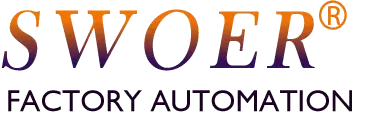I. Mechanical Structure Components Base Platform: The fixed, stationary mounting frame. Moving Platform (End-Effector Platform): The platform that moves in space and carries the tooling. Drive Arms (Active Arms): Typically 3 or 4 arms, each directly driven by a servo motor. Forearm Links (Passive Arms): Lightweight links (e.g., carbon fiber) connected by spherical joints to transmit motion […]
Superior Flexibility for Rapid Changeover Description: Its core advantage. Switching from Part A to Part B requires no mechanical retooling. Advantage: Simply load a new vision program. Changeover time is reduced from hours to minutes, ideal for high-mix, low-volume production. Extremely Gentle on Parts Description: Operates on a “scatter, identify, pick” principle. Advantage: Parts experience no forced […]
Under What Circumstances Should a Parting/Separating Structure Be Added to a Vibratory Bowl? A parting or separating structure is typically added to solve specific part-handling challenges: Parts Tend to Overlap or Stack Symptom: Flat or sheet-like parts stack on top of each other on the track. Solution: Add flipper blades, air jets, or steps to knock down […]
A complete flexible feeder system is an integrated mechatronic device consisting of the following key functional modules and components: I. Core Vibration and Handling Module Vibratory Platform/Feeder Base: Generates micro-amplitude, multi-axis vibration to scatter parts. Flexible Feeding Tray/Plate: The removable surface placed on the vibratory platform. Pin Tray: With an array of pins to stabilize […]
Frame & Structural Components Aluminum profile frame, steel base, mounting plates, safety guards, doors with interlocks. Drive & Transmission Components Servo motors, stepper motors, pneumatic/hydraulic cylinders, electric slides, linear guides, ball screws, timing belts, couplings. III. Feeding & Handling Components Vibratory bowls & controllers, linear feeders, pusher feeders, hoppers, feed tracks, elevators. Actuation & End-Effector Tools […]
Optical inspection machines utilize imaging and image processing to automate inspection, measurement, and identification on high-speed production lines. High-Precision Dimensional Measurement Function: Non-contact measurement of length, width, height, diameter, hole size, and spacing. Application: Verifying if parts are within drawing tolerances. Surface Defect Inspection Function: Identifying various surface flaws. Defects Detected: Scratches, cracks, dents. […]
Optical inspection is suitable for virtually any manufactured product requiring checks for appearance, dimensions, completeness, or identification. Precision Electronic Components Examples: Printed Circuit Boards, chips, connectors, capacitors, resistors, LEDs. Inspects: PCB solder joints, missing/misplaced components, part dimensions, surface defects. Semiconductors & Wafers Examples: Silicon wafers, packaged chips. Inspects: Wafer contamination, scratches, defect patterns; package appearance, […]
The working principle can be summarized in four core steps: Image Acquisition Process: The system captures an image of the object using an industrial camera and specialized lighting. Key Elements: Lighting: Provides stable, uniform illumination to highlight features of interest and suppress noise. Camera: Converts light into a digital image signal. Image Processing Process: The raw image is sent […]
Classified by Actuation Method Single-Acting Cylinders Principle: Air pressure drives in one direction (extend), and a spring (or external force) returns it. Characteristics: Simple, low air consumption. Uneven force, limited stroke. Double-Acting Cylinders Principle: Air pressure drives both extension and retraction. Characteristics: High, controllable force. Standard, most common type. Classified by Function & Special Structure Rodless Cylinders […]
Adjusting a pusher feeder focuses on optimizing mechanical stroke, timing, and sensor feedback. Mechanical Adjustment Inspection & Cleaning Safety: Disconnect air and power. Action: Clean and check for wear on the pusher, guides, and hopper. Adjust Pusher Stroke Goal: Ensure the pusher fully ejects the part without over-travel. Method: For Pneumatic Cylinders: Adjust sensor positions or flow control valves. […]
